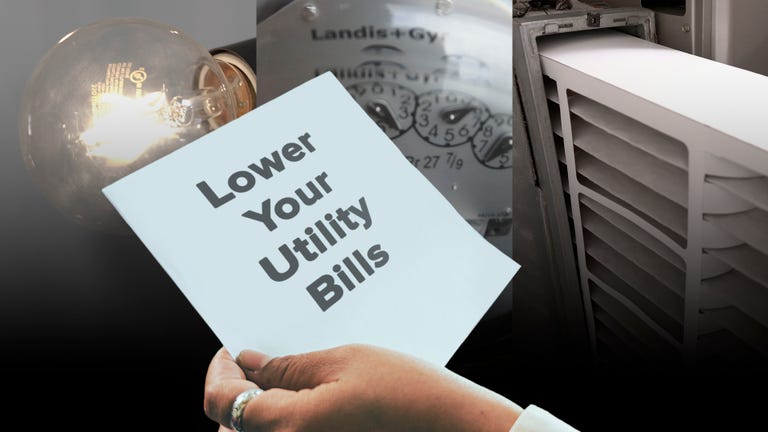It’s not easy to stay cool during the scorching summer heat. Your thermostat is put under a lot of strain as you’re constantly changing the temperature inside. It can be tempting to keep turning it down, but you end up beating yourself up every time. It turns out there’s a sweet spot for setting the right temperature for both the hottest and coldest months. If you want to dramatically reduce your electricity bills, you’re going to have to find it.
Although gas and electricity prices are relatively lower this year, significant temperature fluctuations could mean additional costs on your monthly heating bill. If you’re looking to save money on your utility bills, one step you can take is to adjust your heating bill. thermostat at the right temperature.
Below, we’ll show you the ideal temperature to set your smart thermostat to save energy in both summer and winter. We’ll explain why it can help you manage your home’s climate more efficiently, and share some additional tips for your thermostat and heating habits to reduce your overall consumption.
If you’re looking to save more energy throughout the year, learn how turning off the lights can save you money and how weatherstripping can keep the heat in for less than $10.
There is an optimal temperature to set your thermostat for summer
According to the U.S. Department of Energy, the best technique for staying cool while minimizing utility costs in the summer is to keep your home warmer than usual when no one is home, then set the temperature as high as possible when you are home. Energy Star, a program of the U.S. Environmental Protection Agency and the U.S. Department of Energy, suggests keeping homes at a temperature of 78 degrees Fahrenheit during the day.

He also suggests setting the thermostat to 82 degrees Fahrenheit while sleeping and 85 degrees Fahrenheit when you’re out of the house for maximum savings; recommendations that have been met with scorn and disbelief on social media.
If setting your thermostat to around 80 degrees seems too hot, a good rule of thumb is to raise your thermostat 7 to 10 degrees above your normal setting for eight hours a day, so you can save up to 10 percent a year.
Learn more: You can actually save money by using electricity at these specific times
This is the best temperature to set your thermostat for winter
According to the U.S. Department of Energy, it’s best to keep your thermostat at 68 degrees Fahrenheit for most of the day during the winter months. For maximum effectiveness, you should also schedule eight hours each day where you lower the temperature by 45 to 50 degrees. By following this routine, you may be able to get back to normal. reduce your annual energy costs up to 10%.
Depending on your schedule and comfort preferences, you can decide whether you prefer to keep your home cooler during the day or at night. Some people prefer to turn down the heat at night when they can curl up under blankets and won’t notice the colder conditions. Additionally, sleep in cooler temperatures may be linked to more restful sleep.
For others, it may make more sense to turn down the thermostat during the day when they are at work. Once home, you can increase the temperature to a more comfortable level.
Why Setting Your Thermostat Is Important
In summer
It is a common misconception that setting your air conditioner to a lower temperature than normal will cool your home faster. An air conditioner will only cool your home 15 to 20 degrees below the outside temperature; any other setting will not cool your home any further and will result in unnecessarily high expenses.
Additionally, a higher indoor temperature setting in the summer will slow the flow of heat into your home, resulting in energy and money savings.
In winter
Why is 20°C the ideal temperature for winter? For some people, this temperature is below the lower limit of comfortable indoor temperature, but there is a good reason to keep your home cooler in winter. When your home is set to a lower temperature, it will lose heat more slowly than if the temperature were higher. In other words, keeping your home at a cooler indoor temperature will help it retain heat for longer and reduce the amount of energy needed to keep your home comfortable. As a result, you will save energy and money.

Check this out: Simple Ways to Reduce Your Utility Bills and Save Money
How to Position Your Thermostat for Maximum Efficiency
In addition to following these temperature recommendations, you can maximize your energy efficiency by Install your thermostat in the right placeIt’s best to place your thermostat away from drafts (near vents, doors, or windows) and areas exposed to direct sunlight, as these factors can cause your thermostat to activate unnecessarily. Instead, place it on an interior wall in a high-traffic area of your home.
Do you have a heat pump? Keep this in mind
Fiddling with your thermostat multiple times a day isn’t ideal, so it’s best to have a smart thermostat or a programmable thermostat that allows you to set a schedule and automate temperature changes.
Some smart and programmable thermostats do not work well with heat pumps (an alternative to a furnace and air conditioner). If you have a heat pump system, ask your HVAC professional about purchasing a special type of thermostat designed for use with your system.
Other ways to reduce energy costs
If you’re frustrated with high utility bills, you might be interested in switching to green energy such as solar electricity. With solar panels, you can produce electricity yourself, reducing your energy costs and your dependence on the public grid. They are an environmentally friendly alternative to traditional energy sources, providing clean energy all year round (including in winter) for your home, business or vehicle.
The essential
By adjusting your thermostat wisely, you can make a real difference in your energy consumption throughout the year. By reducing the temperature in your home to 20 degrees Celsius or lower in the winter and to around 26 degrees Celsius in the summer, you can save energy and permanently reduce your electricity bills.
Here Are 23 Ways to Save on Your Electric Bills Right Now
See all photos